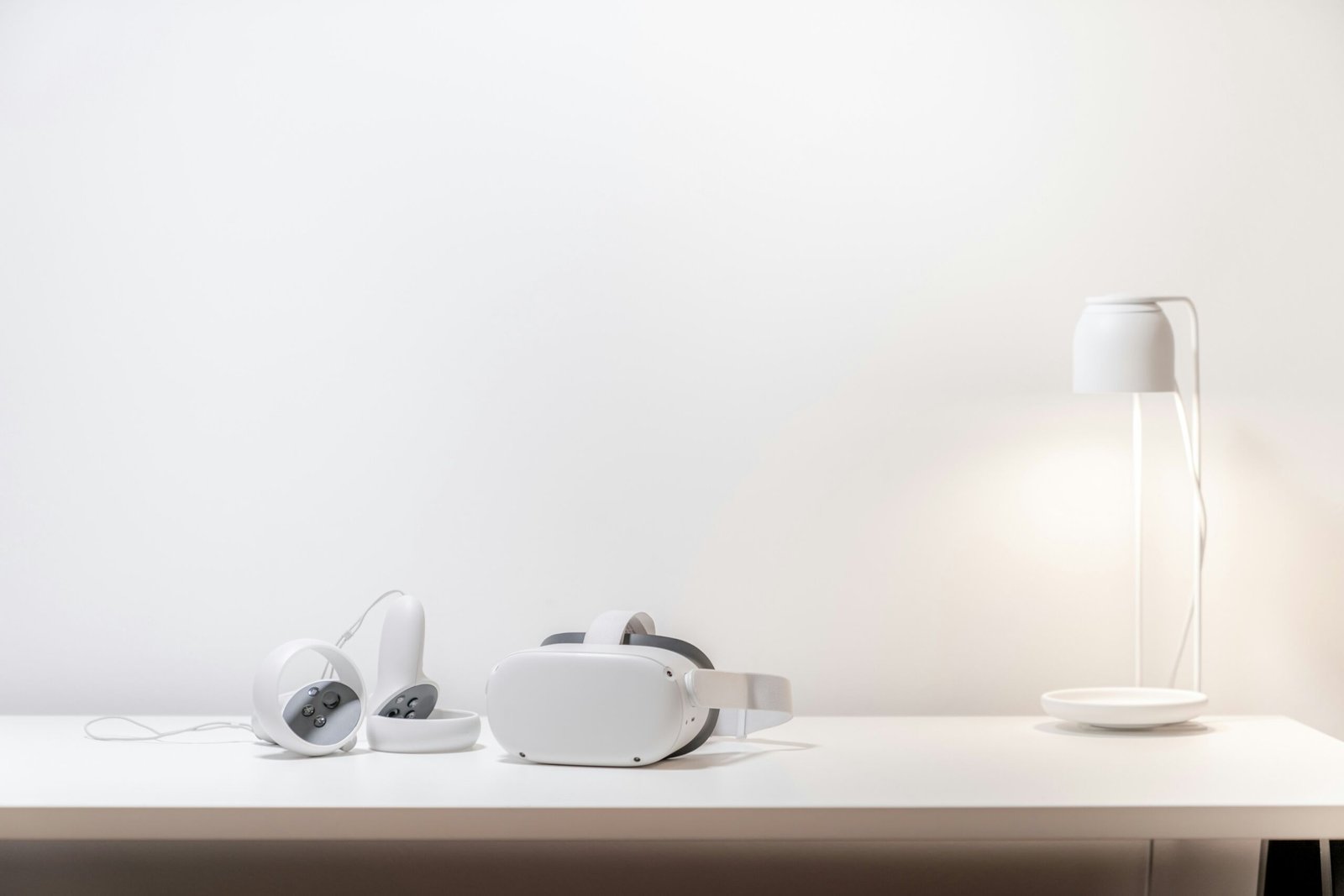Introduction to IoT and Connected Devices
The Internet of Things (IoT) represents a paradigm shift in how devices connect and communicate, fundamentally altering the technological landscape. IoT refers to a network of interconnected devices that collect and exchange data using the internet, enhancing functionality and providing an ecosystem for user engagement. The significance of IoT has expanded across various sectors, facilitating real-time monitoring, automation, and improved decision-making processes.
Connected devices, a cornerstone of the IoT framework, are physical objects integrated with sensors, software, and other technologies to connect and exchange data with other devices and systems over the internet. The proliferation of these devices is evident in many areas, including smart homes, healthcare solutions, and industrial automation. Within smart homes, for example, appliances such as thermostats, lighting systems, and security cameras are increasingly being interlinked, allowing users to manage their home environment seamlessly through mobile applications and smart assistants.
In the health sector, connected medical devices monitor patients’ conditions remotely, thus enabling continuous care and early detection of potential health issues. This integration is particularly vital as it enhances patient engagement and streamlines healthcare services, ultimately leading to improved outcomes. Similarly, in industrial automation, IoT-driven devices optimize processes and improve operational efficiency by allowing for predictive maintenance, where equipment health is monitored in real-time to prevent failures before they occur.
The growing prevalence of connected devices underscores the necessity of well-designed user interfaces that facilitate effective interactions. As the landscape of IoT continues to evolve, focusing on user-centric design principles is paramount to ensure users can easily navigate and leverage the capabilities these advanced technologies offer.
Understanding User Interfaces in IoT
The Internet of Things (IoT) has significantly transformed the way users interact with digital devices. This revolution has led to the emergence of a variety of user interfaces tailored to meet the specific demands of connected devices. Primarily, user interfaces for IoT can be categorized into three major types: touch screens, voice commands, and mobile applications. Each of these interfaces plays a critical role in enhancing user experience, ensuring that interactions with connected devices are smooth and effective.
Touch screens have become commonplace in IoT devices, offering a direct and tactile means of engagement. These interfaces facilitate a more interactive experience, allowing users to control devices with simple gestures. The challenge, however, lies in optimizing the limited screen space typically found on IoT devices. Designers must develop concise layouts that prioritize essential functions and minimize user confusion. Additionally, responsiveness and clarity in touch feedback are paramount, as they significantly influence user satisfaction.
Conversely, voice command interfaces are gaining traction, particularly as the demand for hands-free operation increases. These systems utilize natural language processing to interpret user commands, making interactions more intuitive. Nonetheless, designers face the challenge of accurately understanding diverse speech patterns and accents, which can hinder usability if not addressed properly. Furthermore, contextual awareness in voice interfaces is crucial to provide appropriate responses based on user intent.
Mobile applications serve as a versatile interface for various IoT devices, enabling users to control them remotely while providing extensive data visualization. They leverage the inherent capabilities of smartphones, such as touch, voice, and notifications, creating a seamless user experience. However, these applications must overcome the challenges of ensuring consistent performance across different operating systems and device types. Designers must prioritize user-friendly navigation, making sure that accessing features remains simple, regardless of the user’s technical background.
Ultimately, the design of user interfaces in IoT requires careful consideration of various factors, including available space, user interaction modes, and the need for rapid comprehension. Addressing these challenges effectively can lead to significantly improved user experiences, which are essential for the adoption and success of connected devices.
Principles of Effective UI Design for Connected Devices
In the realm of connected devices, the design of user interfaces (UI) plays a pivotal role in ensuring an intuitive and efficient user experience. To achieve this, several principles should be adhered to, fostering an environment where users can interact seamlessly with technology.
Firstly, simplicity stands out as a fundamental principle. Effective UIs prioritize clarity and focus, stripping away unnecessary elements that might lead to confusion. This approach not only enhances the visual appeal but also aids users in quickly understanding how to navigate through various functionalities. As connected devices often operate in diverse environments, a minimalist design can significantly reduce the cognitive load on users.
Accessibility is another cornerstone of successful UI design. It is essential to accommodate varied user needs, including those with disabilities. Implementing features like voice commands, adjustable font sizes, and high-contrast color schemes ensures that all users can engage with the interface effectively. Moreover, accessibility fosters inclusivity, expanding the user base and ensuring that technology works for everyone.
Responsiveness also plays a crucial role in effective UI design. As connected devices can range from smartphones to smart home systems, ensuring a responsive layout that adapts to different screen sizes and orientations is imperative. A responsive UI not only improves usability but also enhances user satisfaction by providing a consistent experience across devices.
Finally, consistency in design elements and functionalities creates a sense of familiarity, allowing users to navigate the interface with ease. By maintaining uniformity in color schemes, typography, and interactive elements, designers reassure users, enabling them to instinctively understand how to interact with the device.
By adhering to these principles—simplicity, accessibility, responsiveness, and consistency—designers can craft effective UIs for connected devices that optimize user interactions and foster satisfaction.
Interaction Design for Smart Devices
Interaction design plays a critical role in shaping user experiences for smart devices. As homes and workplaces become increasingly populated with interconnected devices, the need for intuitive interaction patterns significantly rises. These patterns serve as the interface through which users interact with smart technology, influencing both satisfaction and efficiency. To create a seamless user experience, designers must consider how users engage with devices in their everyday lives.
Several examples illustrate effective interaction patterns in smart devices. Voice recognition systems, such as Amazon Alexa or Google Assistant, enable users to control appliances effortlessly, reflecting the growing trend towards voice-activated commands. This hands-free approach proves particularly advantageous in environments where manual controls may be inconvenient. Moreover, gesture-based interfaces, like those seen in smart TVs, allow users to navigate through motions, creating a more interactive and engaging experience.
However, it is essential to strike a balance between automation and user control. While automation can enhance convenience, it may lead to user frustration if they feel they lack control over their devices. Designers must therefore ensure that users retain the ability to manually intervene when necessary, providing an option for personal customization. Studies have shown that a satisfactory user experience arises when users feel empowered rather than overpowered by technology.
Designers should also focus on making interactions feel natural. For instance, incorporating familiar gestures, such as swiping or pinching, can help users feel more at ease with new devices. Additionally, placing contextual information within the user interface fosters a better understanding of each device’s functionality. By thoughtfully integrating familiar interaction patterns, designers can create smart devices that resonate with users and facilitate smooth interactions.
User Research and Testing for IoT Interfaces
User research plays a crucial role in the design and development of Internet of Things (IoT) interfaces, informing key design decisions that impact user experience and functionality. By gathering user feedback early and often, designers can develop a deeper understanding of user needs, preferences, and behaviors. Effective methodologies for collecting this feedback include surveys, interviews, and observational studies, which allow researchers to analyze qualitative data and quantitative metrics to enhance the IoT interface design.
One essential method for evaluating IoT interfaces is usability testing. This process involves real users interacting with the designed product to identify any issues they may encounter. Conducting usability tests in real-world environments can illuminate how users engage with devices in their natural settings, often revealing insights that might not surface in controlled conditions. For example, researchers can observe how a smart thermostat is accessed by users at different times of the day, gaining insights into user behavior such as typical usage patterns, preferences for temperature settings, and even frustrations that may result from overly complex interfaces.
Moreover, remote usability testing has gained popularity, particularly in evaluating connected devices. Through screen-sharing technology and participant recordings, designers can collect data on user interactions across diverse demographics and locations. For instance, testing with participants who vary in technical proficiency can highlight design aspects that may need simplification for wider accessibility. This real-world interplay between users and their devices provides designers with actionable feedback that can drive iterative improvements. By incorporating user research effectively into the IoT interface design process, developers can create products that not only meet user expectations but also enhance overall satisfaction and usability.
Security Considerations in Designing IoT Interfaces
In the rapidly evolving landscape of the Internet of Things (IoT), the importance of embedding strong security features into user interface (UI) design cannot be overstated. As more devices become interconnected, they increasingly share sensitive user data, making it essential for designers to implement robust security protocols. A fundamental aspect of securing IoT devices revolves around data privacy; users must be assured that their personal information is protected from unauthorized access and breaches. This necessitates the integration of privacy-centric features within UIs, allowing users to have clear knowledge about the data being collected, how it is used, and whom it is shared with.
Moreover, establishing secure authentication methods is critical in UI design for IoT. Designers should consider implementing multi-factor authentication and biometric verification to enhance security, thus ensuring that only authorized individuals can access sensitive features and data. Such practices help establish user trust by reinforcing the idea that the product prioritizes their security. Additionally, providing users with clear, concise instructions on how to set up strong passwords and security options is another critical step designers can take to enhance overall safety.
Transparency and user control are also crucial elements of effective IoT UI design. Users should be made aware of their choices regarding data sharing, providing them with the ability to opt-in or opt-out of specific data collection practices. This not only builds trust but also encourages responsible use of personal information. Consequently, best practices in designing secure user interfaces include involving users in the design process, conducting regular security assessments, and adhering to standard security frameworks. These measures are fundamental in creating a safe and intuitive user experience while ensuring that security remains at the forefront of IoT design.
Case Studies of Successful UI Designs in IoT
The advent of the Internet of Things (IoT) has transformed the way users interact with connected devices, necessitating innovative user interface (UI) designs that prioritize usability and security. This section explores notable case studies that epitomize successful UI implementations across various industries.
One example is Philips Hue, a smart lighting system that allows users to control their home lighting via a mobile app. The design is lauded for its intuitive interface, which simplifies the process of setting moods and automating lighting schedules. The use of direct controls, alongside visual cues indicating system status, enhances user engagement. Moreover, Philips has incorporated security features such as end-to-end encryption, ensuring that users’ data remains secure while interacting with their home environment. This design exemplifies how usability and security can go hand in hand.
Another compelling case is the Nest Learning Thermostat, which employs a distinct and user-friendly circular design. The device learns users’ preferences over time and adapts its settings automatically, offering an optimal experience while minimizing energy consumption. The touch-friendly interface accompanied by robust graphical elements engages users, making it simple to adjust settings manually if needed. Nest also places a strong emphasis on security, providing two-factor authentication and stringent data protection protocols, thus instilling user confidence in engaging with their devices.
In the healthcare industry, medical devices like the Fitbit offer a practical application of UI design in IoT. The Fitbit app provides clear visualizations of user data, including heart rate and activity levels, facilitating easy access to health metrics. By utilizing gamification strategies—such as step challenges—Fitbit increases user motivation for health management. Security is paramount in healthcare, and Fitbit addresses this with continuous software updates and data encryption, effectively safeguarding sensitive user information.
These case studies exemplify how effective UI design in IoT is rooted in a blend of functionality, aesthetic appeal, and security measures. The incorporation of user feedback, adherence to design standards, and proactive security considerations are integral to creating successful connected device interfaces. Drawing from these examples informs future projects, illustrating that a well-designed UI can profoundly enhance the user experience and device security.
Future Trends in UI Design for Connected Devices
As technology continues to evolve at a rapid pace, user interface (UI) design for connected devices is also undergoing significant changes. One prominent trend is the increasing prominence of machine learning, which enhances user experiences by providing personalized interactions. Leveraging vast amounts of data, machine learning algorithms can adapt interfaces to individual user preferences, making them more intuitive and efficient. This personalization not only improves usability but also encourages users to engage more deeply with connected devices.
Another key trend is the rise of voice and gesture control. As natural language processing (NLP) and computer vision technologies advance, users can interact with devices through simple voice commands or gesture recognition. This hands-free approach not only aligns with the growing demand for convenience but also enhances accessibility for users with disabilities. The seamless integration of these controls is increasingly expected in modern interface design, as they allow users to navigate devices in a more fluid manner, moving away from traditional touchscreen interactions.
Moreover, the integration of augmented reality (AR) is transforming how users visualize and interact with digital information. AR overlays digital elements onto the real world, thus providing users with contextual information that is both engaging and informative. For instance, in smart home devices, AR can help users visualize energy consumption patterns or highlight areas needing attention, such as safety alerts in connected security systems. As AR technology matures, its incorporation into UI design will likely become more commonplace, offering novel ways to enhance user engagement.
Overall, the convergence of machine learning, voice and gesture controls, and augmented reality is poised to redefine user interfaces for connected devices. These trends not only improve the user experience but also lay the groundwork for future innovations in the Internet of Things (IoT). Adapting to these emerging technologies will be essential for designers aiming to create sophisticated, user-friendly interfaces that meet the demands of an increasingly connected world.
Conclusion and Key Takeaways
In the rapidly evolving landscape of connected devices, the significance of thoughtful user interface design and robust security measures cannot be overstated. As the Internet of Things (IoT) expands, creating intuitive interfaces that enhance user experience while ensuring safety is paramount. A well-designed user interface facilitates seamless interactions, allowing users to engage with technology in an efficient manner. The integration of user-centric design principles fosters greater accessibility, making devices more approachable for a wider audience.
Security considerations, on the other hand, form a crucial part of the development process. With the proliferation of connected devices, the risk of cyber threats and data breaches increases significantly. It is essential for designers and engineers to prioritize security from the outset, ensuring that devices not only function effectively but also safeguard user information. This encompasses adopting best practices in encryption, authentication, and regular software updates to counter emerging vulnerabilities.
The guiding principles of user interface design for connected devices should emphasize usability, accessibility, and security. Practitioners in the field must engage in continuous learning and collaboration, sharing insights that drive innovation and advancements. As technology continues to progress, the potential for smart devices to improve lives and enhance daily experiences becomes increasingly apparent. By focusing on the integration of aesthetic appeal with functionality, while also prioritizing security, designers can contribute to a safer and more user-friendly digital environment.
Looking toward the future, ongoing exploration of novel design techniques and security measures will be essential in navigating the complexities of IoT. The importance of proactive design and security in user interfaces will not diminish; rather, it will evolve alongside new technological developments. By adopting a holistic approach that encompasses both user experience and security, we can pave the way for a safe and interconnected future.




